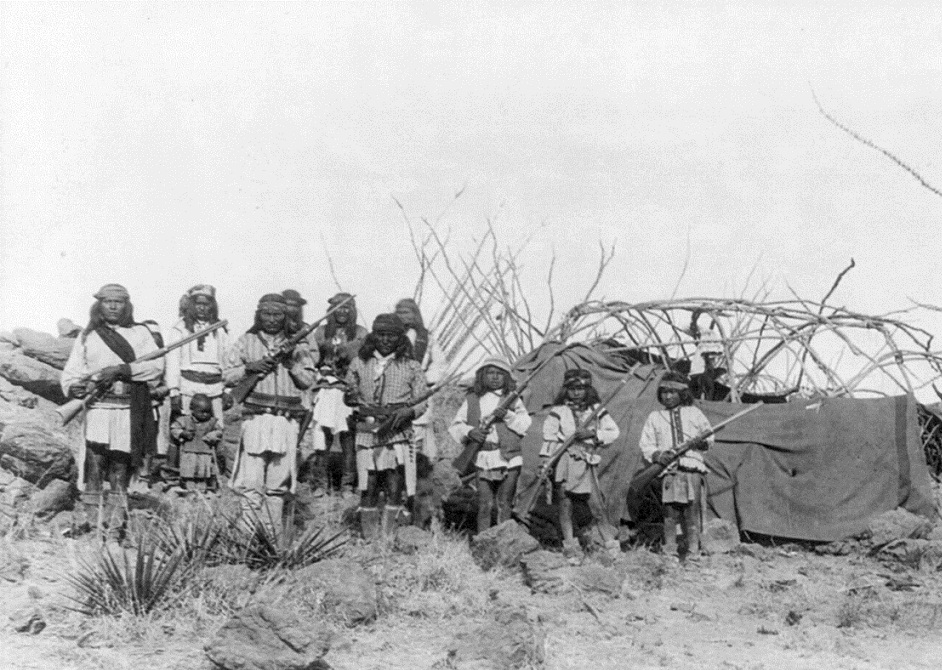
Following the Civil War, the United States had a large, experienced army that could turn its attention to the “pacification” of the Indian nations in the West. At the same time, the United States was opening up vast tracts of land for non-Indian settlement, thus increasing tensions and violence between the Indians who saw the land as theirs and the non-Indians who felt that they had a right to claim it.
Historian Sherry Smith, in her book The View from Officers’ Row: Army Perceptions of Western Indians, writes:
“By the end of the Civil War, the army had established two important and related strategies that it could apply to western Indians. The first concerned winter campaigning. Winter was a season when Plains Indians, for example, were more sedentary and also more vulnerable. If their food stores were destroyed, the effects could be disastrous for the entire group. The second strategy involved total war. This meant waging war not only against combatants but also against noncombatants. If women and children were not deliberately killed, they could certainly die when food, housing, livestock, and other material necessities were destroyed. The enemy was left destitute, demoralized, and defeated in total war.”
Historian Sherry Smith also writes:
“Genocide was neither the policy nor the result. They did, however, favor the extinction of Indian cultures and ways of life. Many even believed that Indian cultures were doomed and that the Indians’ only hope of survival rested with their acceptance of civilization and Christianity.”
For crimes against the non-Indian settlers, neither the military nor the settlers sought justice, but preferred retaliation against any Indians who happened to be around. For crimes against the Indians, there was no justice, no concern for bringing the guilty to trail.
Briefly described below are a few of the Indian conflicts of 1869.
Pawnee
A party of 14 Pawnee men, recently honorably discharged from military service, camped near the house of a friendly settler in Kansas. Soldiers demanded to see their discharge papers and left after the papers are displayed. The soldiers soon returned, however, with reinforcements and began shooting at the Indians. Nine Pawnees were killed and six of the bodies were decapitated and their heads sent to Washington, D.C. for “scientific” study. In his book An Unspeakable Sadness: The Dispossession of the Nebraska Indians, David Wishart reports:
“The evidence against the soldiers was irrefutable; the Indians’ guns had not even been fired. No one was charged, much less convicted.”
In Nebraska, a non-Indian was killed on an Island in the Platte River which was frequented by the Pawnees. The United States informed the Pawnee chiefs that they must surrender the murderers for trial in an American court. A letter from Commissioner of Indian Affairs Ely Parker warned the chiefs that the government would hold the entire Pawnee nation responsible for the death if the guilty men were not surrendered.
The government withheld annuity goods and money until the chiefs surrendered Yellow Sun, Horse Driver, Little Wolf, Great Traveler, Man Scared of Horses, Lucky Man, and Blue Hawk. Yellow Sun, Blue Hawk, Horse Driver, and Little Wolf were convicted of murder in federal court. Pawnee historian Martha Royce Blaine, in her book Pawnee Passage 1870-1875, writes:
“There was serious doubt whether Blue Hawk had had anything to do with the event, although he had given himself up as a representative of the Pithawirata band.”
All of the other men also denied their guilt with regard to the murder.
Blackfoot, Crow
In Montana, two herders were killed just north of Fort Benton. With no investigation of the incident, Fort Benton residents assumed that the murders had been committed by the Blackfoot and so they sought not justice, but revenge, by killing some Blackfoot. One Blackfoot man was found in Fort Benton and was immediately hung. A second was shot as he was attempting to leave town. In response, a large war party swept into town seeking revenge for the deaths of the two Blackfoot. The war party rode up and down the street, exchanging gunfire with the town’s residents. The residents claimed they killed 15 of the Blackfoot warriors. Later investigation into the deaths of the two herders concluded that the men had been killed by a Crow war party.
Request for Aid
In South Dakota, the Mandan, Hidatsa, and Arikara asked the United States to provide them with guns and ammunition so that they could defend their fields against the Sioux. If they could defend their fields, the chiefs told the United States, then they could raise enough crops to support themselves.
Tsimshian, Klallam
In Washington, a group of 30 Tsimshian men, women, and children were massacred on the Dungeness spit by a party of 20 Klallam men. The attack was in retaliation for the abduction of two Klallam women by the Tsimshian.
The Kake War
In Alaska, the Kake War was started when the Kake Tlingit killed two traders from Sitka after a sentry fired at the Tlingit. The U.S. military ordered the destruction of Tlingit homes in retaliation and three villages were torn apart by gunfire from the U.S.S. Saginaw.
Cheyenne
At Summit Springs, Colorado, eight companies of the 5th Cavalry attacked a Cheyenne summer encampment. In the battle, Tall Bull and 52 other Indians were killed. This defeat effectively broke the power of the Cheyenne Dog Soldiers. Bull Bear, as a consequence of the battle, took his band to the reservation in Oklahoma.
In Texas, army troops under the command of Lieutenant Colonel George Armstrong Custer encountered the Cheyenne village of Medicine Arrows and Little Robe. Knowing that the band was holding two American women as hostages, Custer invited the Cheyenne to talk. He then seized the four chiefs as hostages. He sent one of them back to the village and threatened to hang the other three unless the American women were released. The Cheyenne released the women.
Lieutenant Colonel George Armstrong Custer smoked the sacred pipe with Stone Forehead, the keeper of the Cheyenne Sacred Arrows. Custer promised not to fight against the Cheyenne. Stone Forehead told him that the price of breaking this promise would be his death and the death of all of those in his command. Stone Forehead then put the ashes from the pipe on Custer’s boots and told him that Maheo (the Creator) would destroy him if he went against the pipe.
Apache
In Arizona, the United States waged an aggressive military campaign against the Chiricahua Apache under the leadership of Cochise. In their first battle the Americans killed 18 Apache warriors. A week later, Cochise managed to surround the Americans, holding them down and driving off one relief party. With the arrival of a large American force from Camp Critenden the Apache scattered into the mountains.
In Arizona, Lt. Col. John Green led his troops into the White Mountains as a part of the U.S. war against the Apache. The soldiers were approached by Apache chief Miguel who told them that his band wanted peace. A group of 50 soldiers were sent to Miguel’s village with vague instructions to exterminate it. However, they found white flags hanging from every wickiup and their reception was peaceful. Journalist Ron Dungan, in an article in the New Mexico Historical Review, reports:
“Green ventured into Apache land believing what most Americans did: Apaches acted as one tribe, and a hostile one at that. Green, a traditional military man who had little use for critical thinking about the differences between various bands, began to question his assumptions about Apaches.”
Navajo
In New Mexico, Navajo raiders captured some 3-4,000 sheep from Spanish-American settlers. In their book A History of the Navajos: The Reservation Years, Garrick Bailey and Roberta Glenn Bailey report:
“Military officials chose to downplay the numerous reports of raids and claims for depredations: the army had no desire to be drawn into another war with the Navajos.”
In New Mexico, Ute raiders captured three herds of sheep and goats from the Navajos. They also captured seven horses and killed two Navajos.
Buffalo Hunting
In Montana, a buffalo hunting party of Pend d’Oreille and Kootenai was attacked by the Blackfoot. Five of the hunters were killed and many horses were captured.
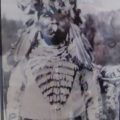
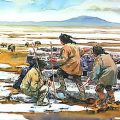
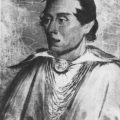
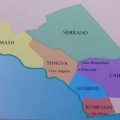
Leave a Reply